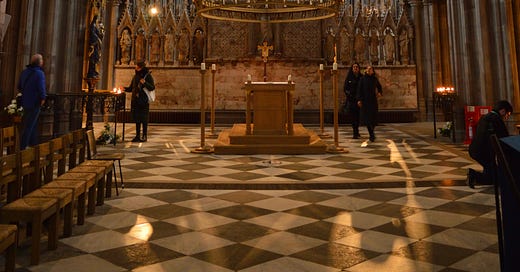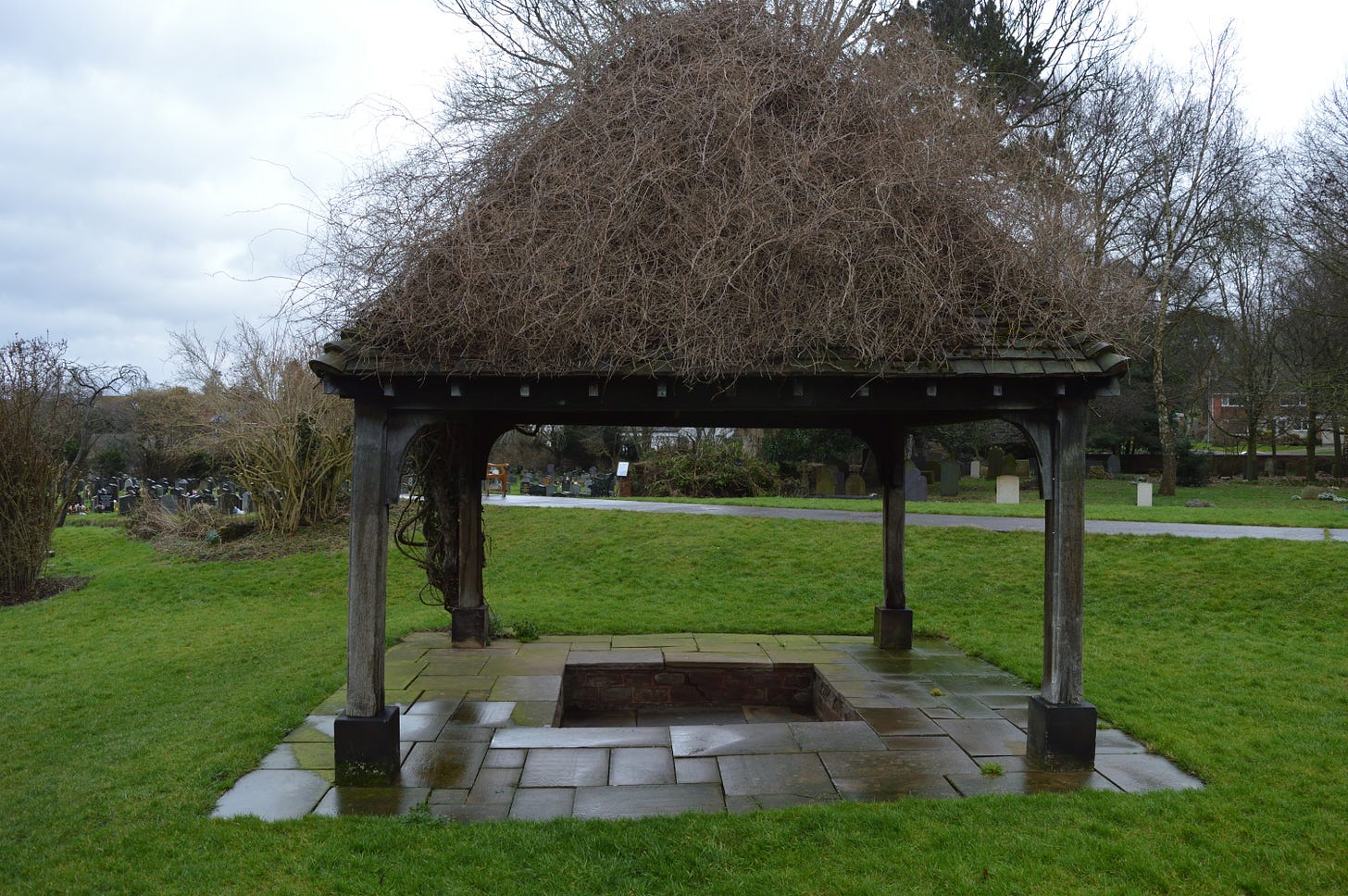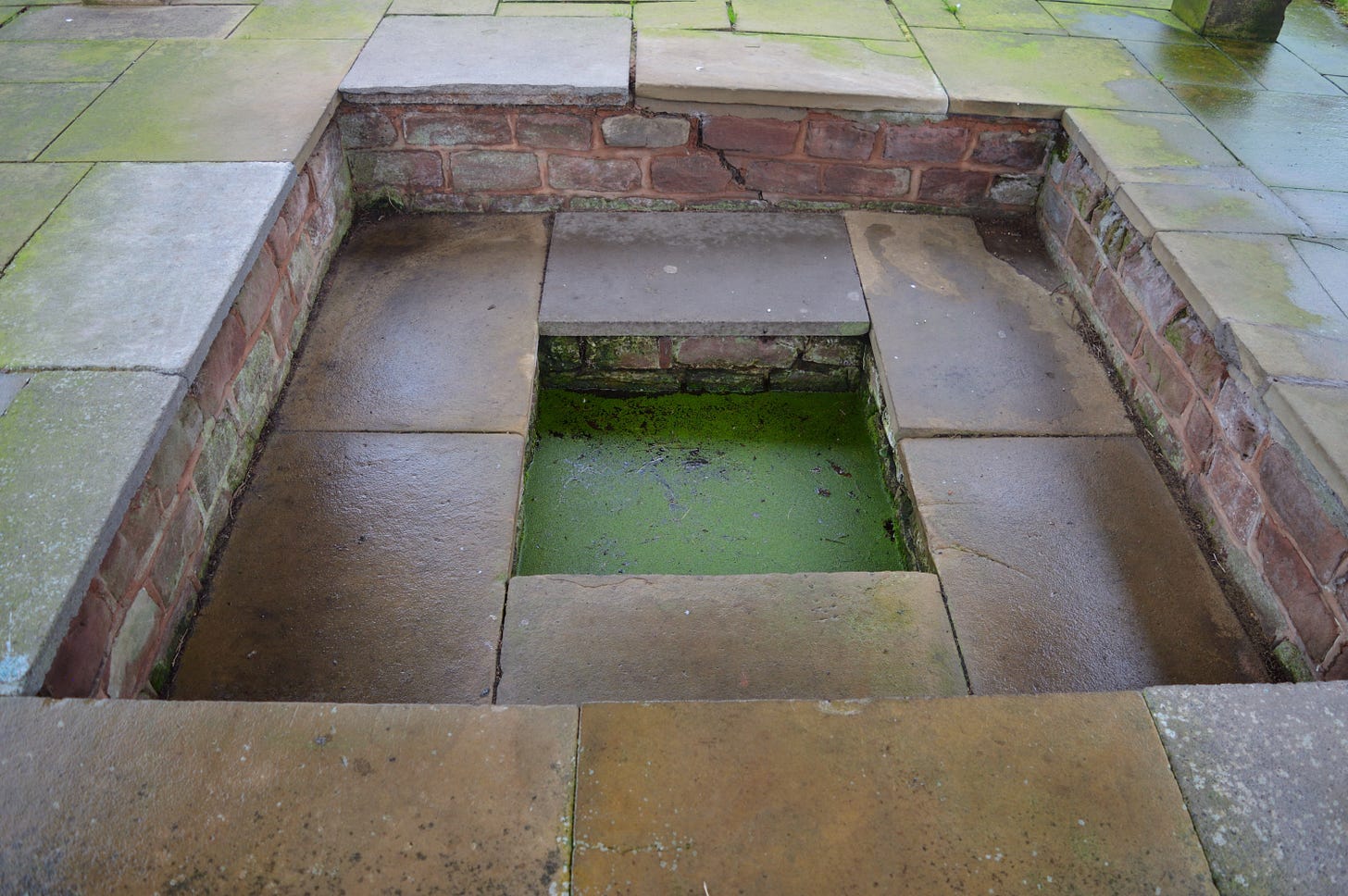On a Friday afternoon in February, after visiting several churches en route, we finally headed towards Lichfield on our mini-pilgrimage. Lichfield is a very small city (6 square miles), quite picturesque in parts and is of course famous for its 13th century cathedral.
St Chad’s Shrine - more on this later
There are myths about the origins of Lichfield, some around the name itself. Think of a “lych gate” - the gateway to a churchyard which contains benches to rest a coffin on. One interpretation of the name Lichfield is “field of the dead”– referring to 300 AD and the reign of Diocletian, when 1000 Christians were supposed to have been murdered in the area. The first part of the name certainly has similarities with the Dutch and German words lijk and leiche, meaning corpse, although historians have found no concrete evidence to support this myth. But the more likely prospect is that the name derives from the name of a local Roman settlement - Letocetum - which was to the south of the city.
Lichfield became known to history mainly through St Chad, who placed his See there in the year 666, as it was a fairly central point in the kingdom of Mercia.
So, before going to the Cathedral, we stopped at a church named after St Chad, where there is a holy well associated with him. He lived here as a hermit in the time before he became the Bishop and the site later became a monastery.
At this point in the day, the wind was blowing strongly and it was starting to rain. So this trip to the well was less a reverent pilgrimage than a quick dash through the February elements.
The spring was used by St Chad to baptise converts, fulfilling his role as a missionary priest. It’s been rebuilt many times and its current incarnation is a square pool below ground level.
I jumped down and knelt by the water. The green colour is pondweed, so I scooped it aside to see the clear water underneath, with large stones at the bottom. I crossed myself (TC is not a holy well enthusiast so left me to it) and we headed back to the car. It would have been nice to spend a little time there in prayer and reflection but the weather was really not cooperating. What I have found in my many visits to holy places is that feelings of holiness and otherworldiness are not often coincidental with the experience of the place. There can be, indeed, a feeling of “is that it?” Perhaps I build these places up too much in my mind before the visit, or perhaps these places are just another example of the reality of faith; it’s the belief, the will, that is the key. Feelings are not important - they are nice to have but not essential to a life of faith.
So we headed back to the car to drive the short distance to the Cathedral.
After paying what TC considered to be a excessive amount for parking, we headed up the Close to the Cathedral. Most Anglican Cathedrals have a “Close” which is where the priests and officials of the church live. The famous west front of the Cathedral gradually emerged as we got closer.
Keep reading with a 7-day free trial
Subscribe to Incola ego sum in terra to keep reading this post and get 7 days of free access to the full post archives.







